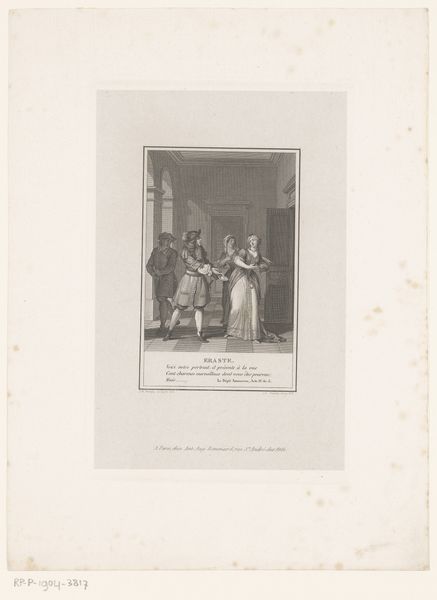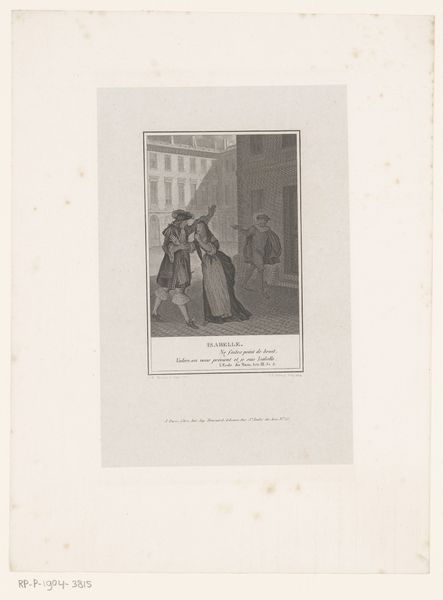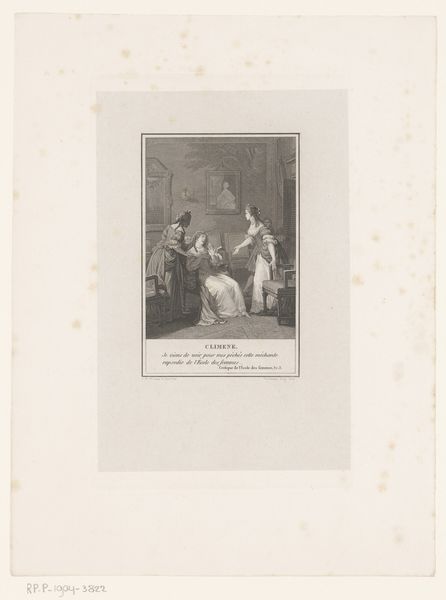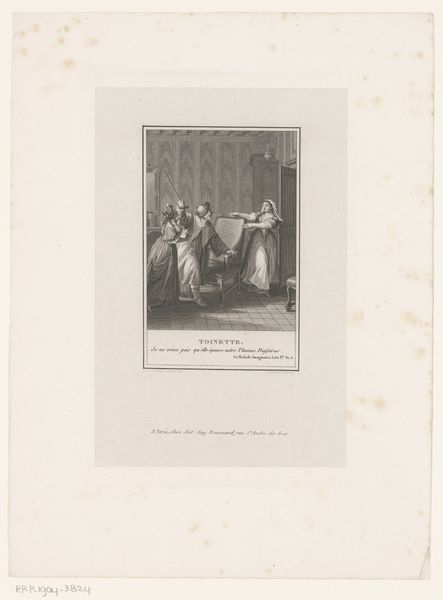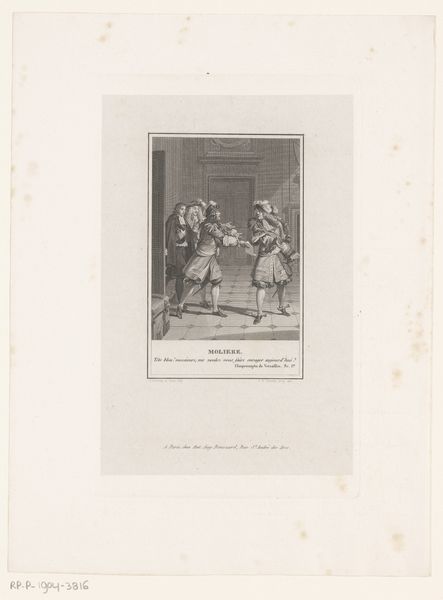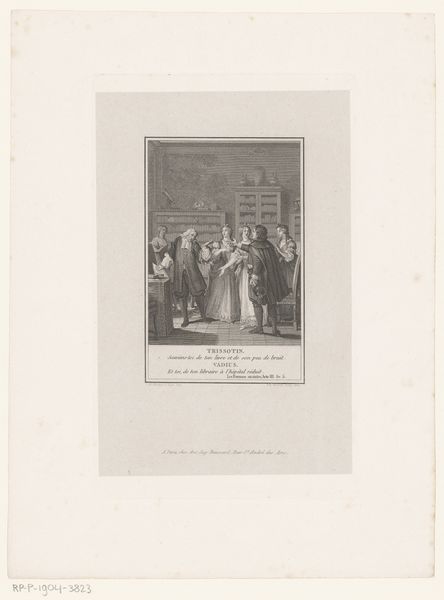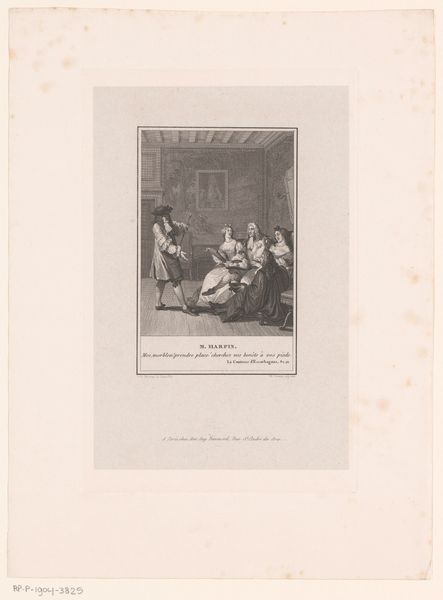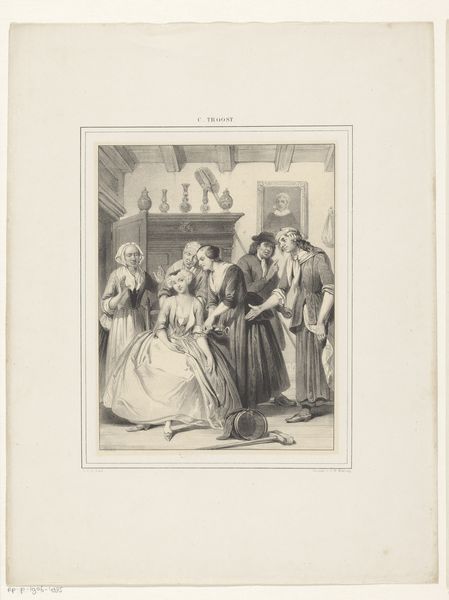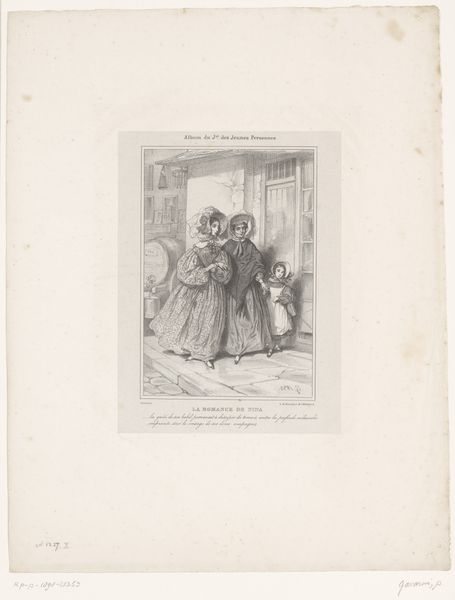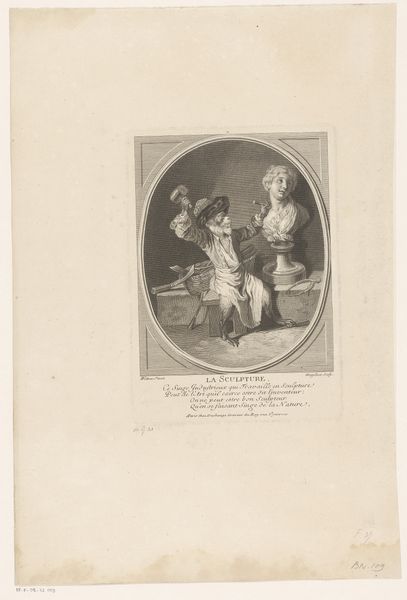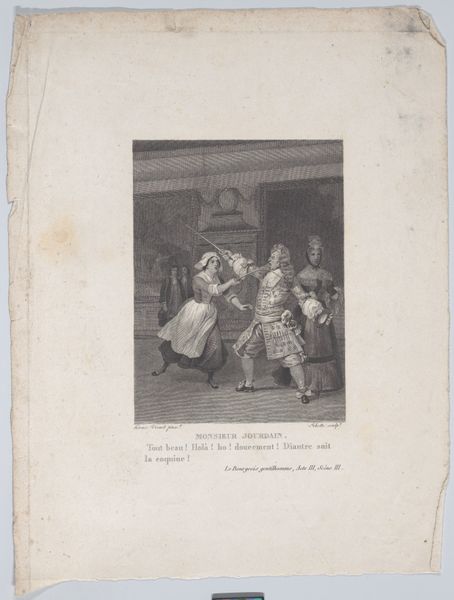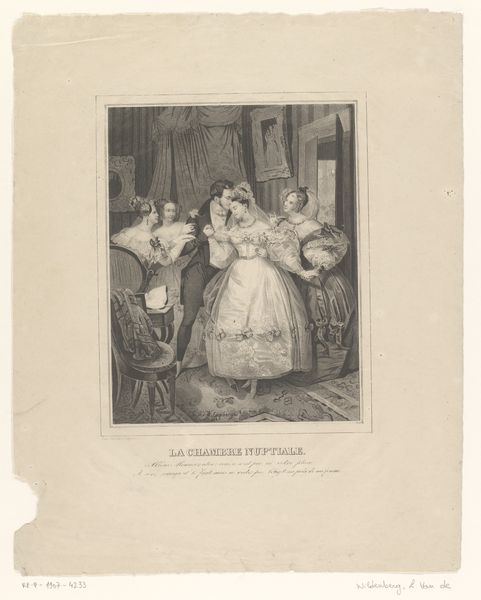
Interieur met vrouw tussen twee mannen in, haar hand opgeheven 1811 - 1813
0:00
0:00
print, engraving
#
neoclacissism
# print
#
figuration
#
history-painting
#
academic-art
#
engraving
Dimensions: height 229 mm, width 146 mm
Copyright: Rijks Museum: Open Domain
Editor: This print by Jean-Baptiste-Blaise Simonet, titled "Interior with woman between two men, her hand raised", made around 1811-1813, depicts a rather theatrical scene. The woman’s raised hand and the men's stances suggest a moment of heightened tension or perhaps a moral dilemma. What layers might we be missing in this seemingly simple composition? Curator: This image offers us a window into early 19th-century Neoclassical concerns regarding gender and power dynamics. The woman, positioned centrally but seemingly constrained by the men, could represent the limited agency afforded to women within a patriarchal society. The "raised hand" is especially intriguing. Is it a gesture of defiance? Or supplication? We should ask, how does the staging, reminiscent of theater, reinforce or subvert the established norms of the time? Editor: So, it's less about the literal story being portrayed and more about what it reveals about social structures? The print appears to use history to reflect ideas back to its present. Curator: Exactly. Academic art often aimed to teach moral lessons and uphold societal values, but we can also analyze it critically, noting how it might expose inherent inequalities. The "woman between two men" is an ancient trope - a symbol of difficult decisionmaking - but also can show us how very limited the scope was for many women. What are they disagreeing over? Power? Love? Status? Who benefits from the argument being undertaken in the space? Editor: I see, considering it in the context of early 19th-century societal norms makes the image far more compelling. I never would have gone that far if left to my own thoughts. Curator: Considering art within a historical and social frame illuminates not just the past, but also the continuous renegotiations of power and identity that persist today. Editor: Thanks so much for your insights; I’m starting to appreciate academic prints as less passive records.
Comments
No comments
Be the first to comment and join the conversation on the ultimate creative platform.
